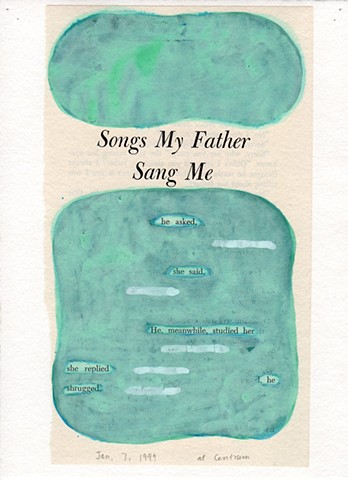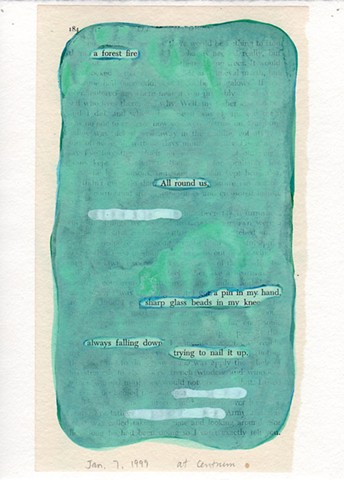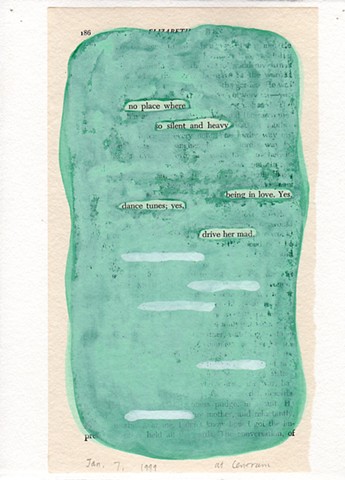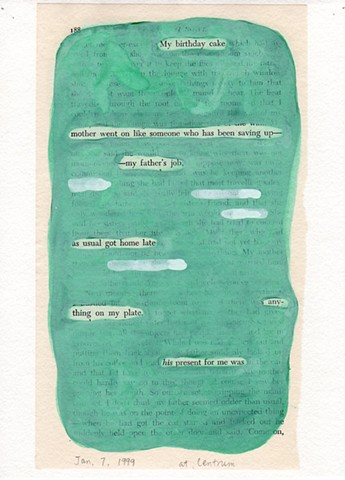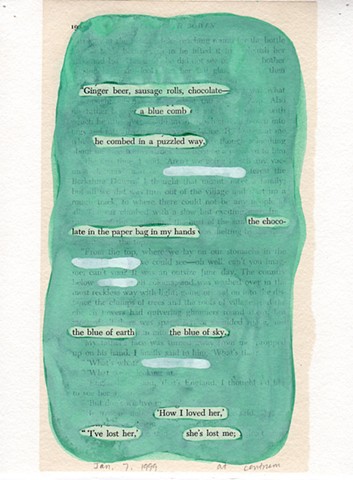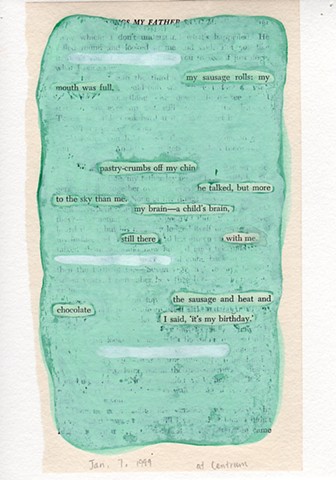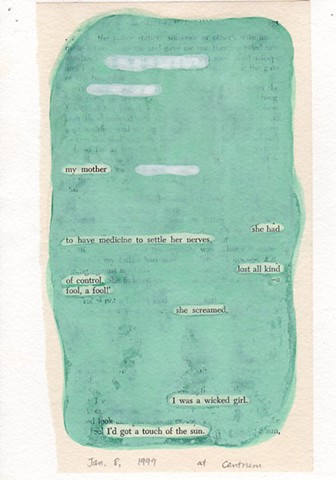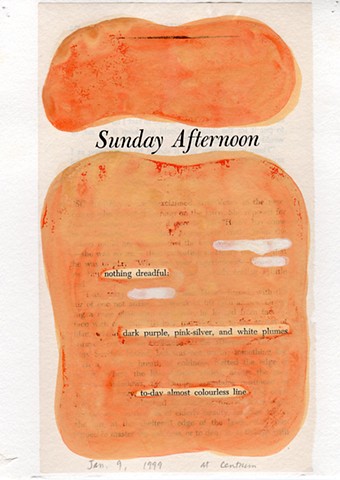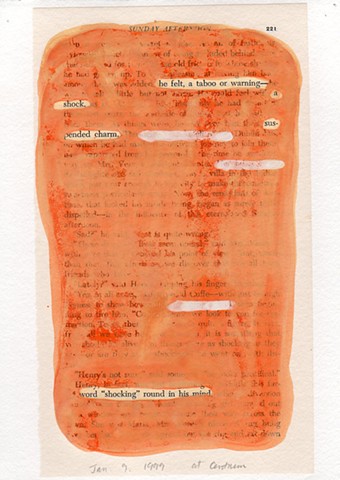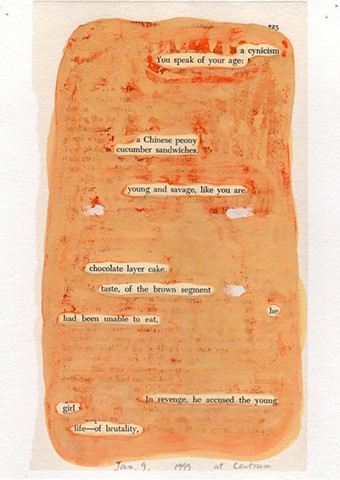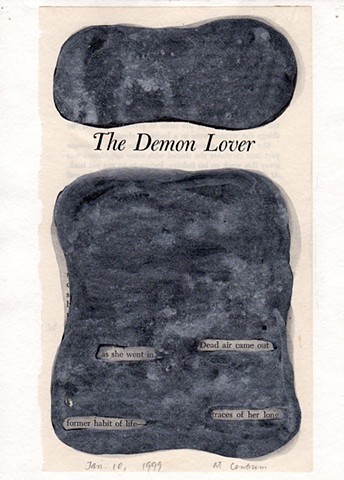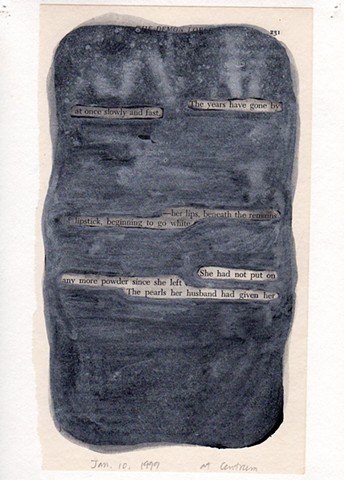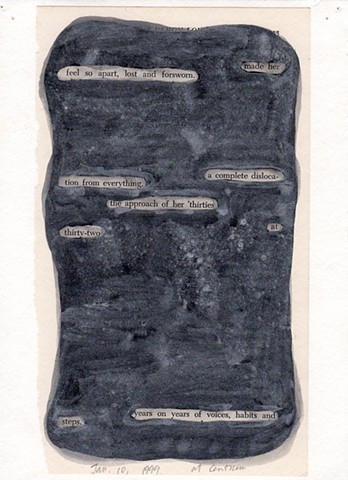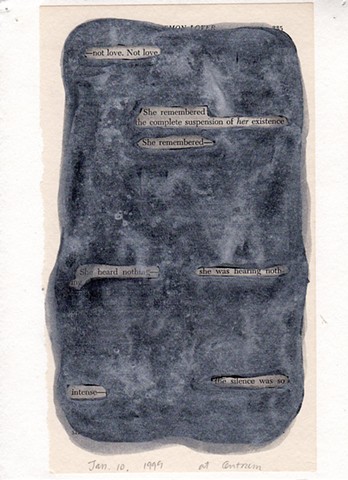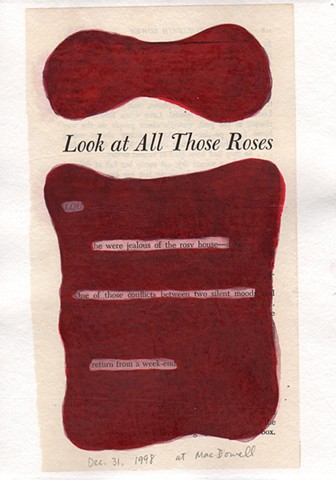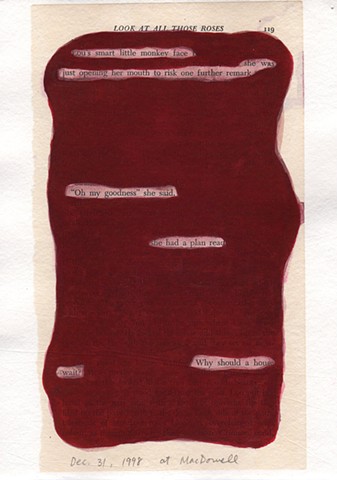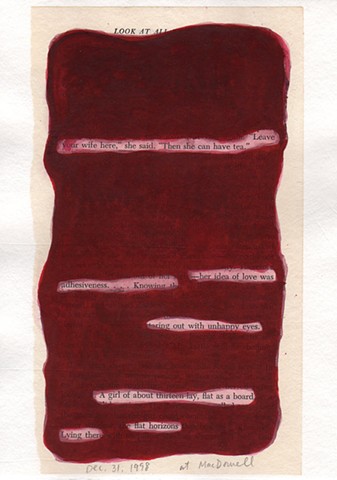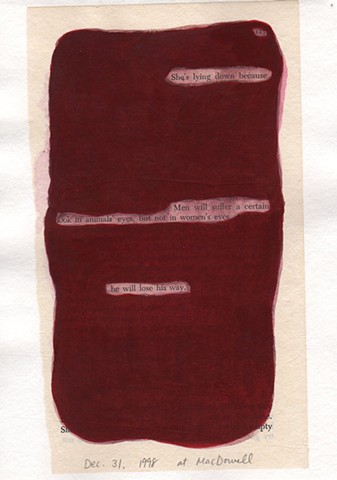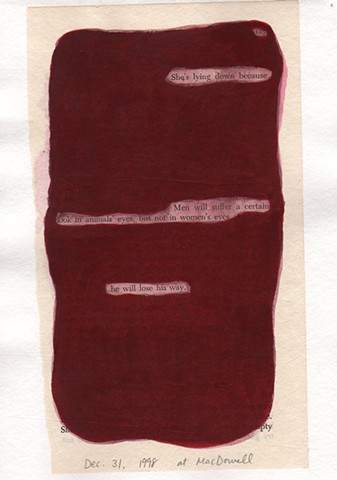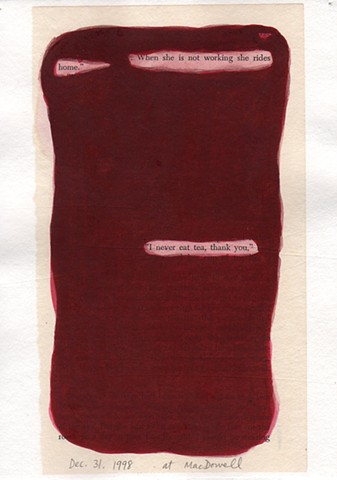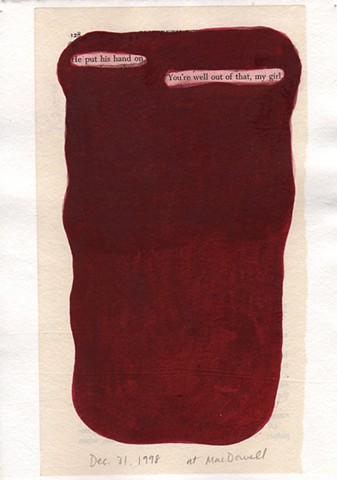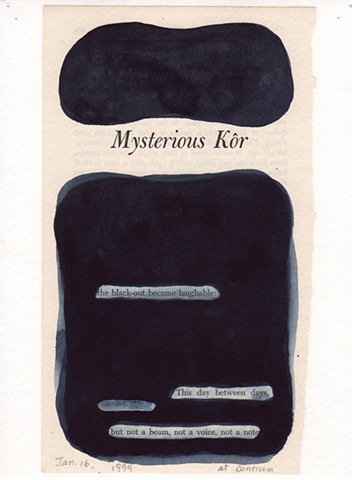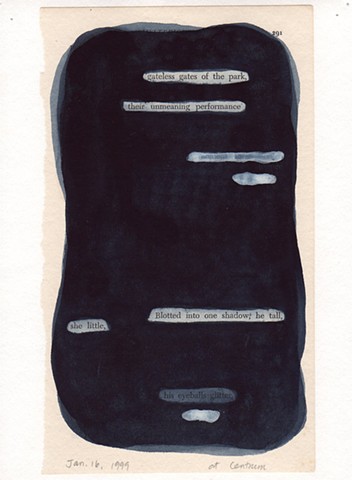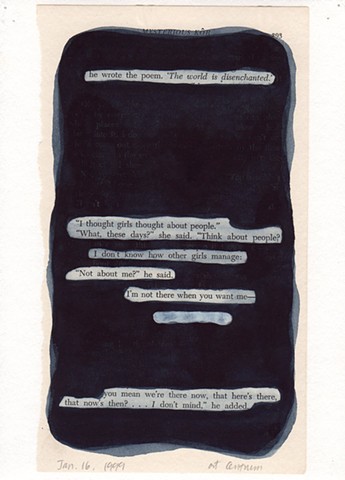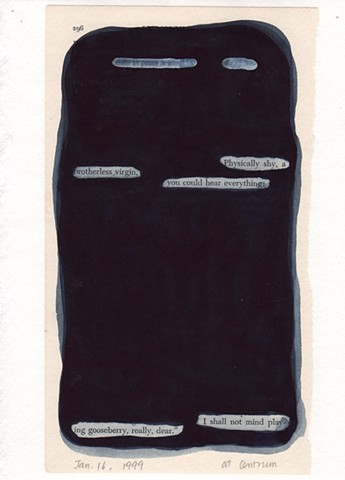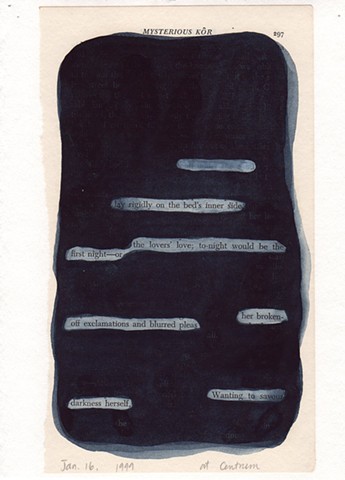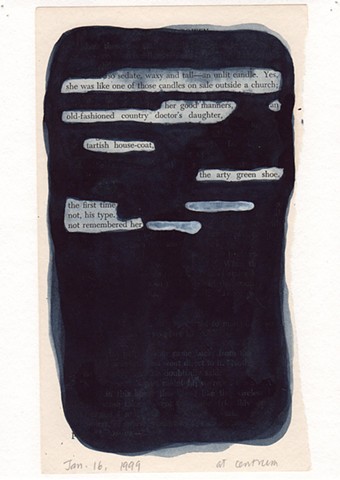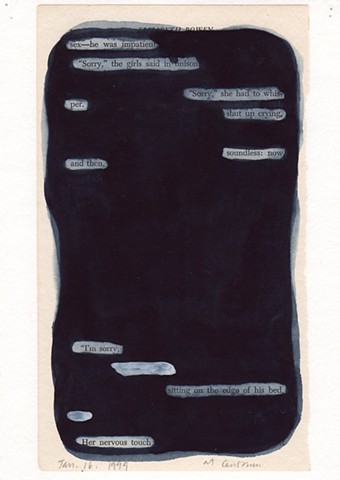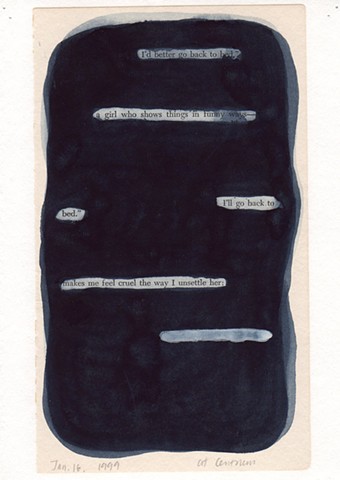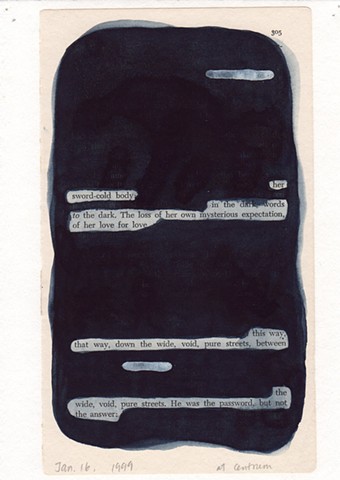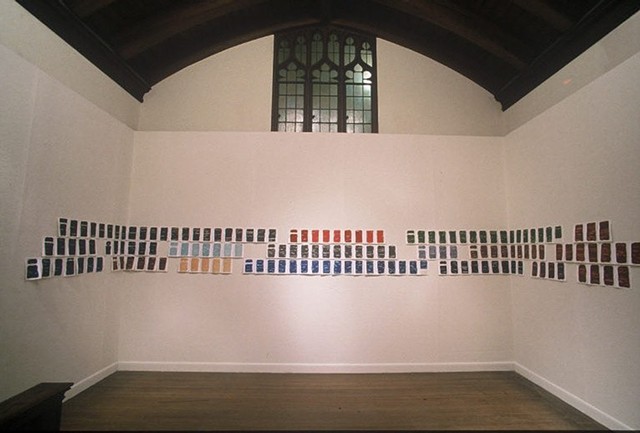Dear John
Dear John
1999 - 2000
Mineral pigment, gouache and watercolor on book pages individually mounted on BFK paper
Total of 152 book pages, 7 ¼" x 5 ½" each
Installation size variable
Dear John \ - jän\ n (ca. 1945) : a letter (as to a soldier) in which a wife asks for a divorce or a girlfriend breaks off an engagement or a friendship.
Read the statement about this work at the bottom.
Dear John
Dear John \ - jän\ n (ca. 1945) : a letter (as to a soldier) in which a wife asks for a divorce or a girlfriend breaks off an engagement or a friendship.
"Dear John" is comprised of a total of 152 pages from a book called Stories by Elizabeth Bowen, published in 1959. Each page is painted in watercolor, leaving selected words and sentences visible. The eighteen chapters in this book are characterized by a different color for each chapter.
I didn’t read Stories by Elizabeth Bowen in the sense of reading as a story, though I have looked at the words and sentences on each page in this book for countless hours, and felt particular scenes, places, objects, characters, emotions, and feelings that each chapter offers. I found her stories, or rather, her choice of certain words and sentences, very idiosyncratic and full of contradiction. I found it fascinating because I felt like it reflected my frame of mind at that time in my life. I treated this series of drawing as my diary first, noting the date and location where each page was completed. Rather than keeping the original titles, my choice of title, Dear John, suggests a different context for the entire book.
It was an arbitrary decision for me to have chosen this book. Not knowing the author’s background nor having read any of her other books, I had no preconceived project in mind. I happened to have this book in my possession when I needed it, and I used it to say something.
In the preface of Stories by Elizabeth Bowen, Bowen writes:
OFTEN, at different times, I thought I should like to select from my own stories—re-read them, as an entire muster, and re-evaluate them as I thus saw them. . . . As I see it, this volume must "represent" my stories—as though on the assumption that those not in it are due to be blown away on the dust of time. . . . These eighteen pieces (the earliest written when I was twenty) can claim to be fair examples of themes and treatments. . . . I find that I discard stories which reek to me too much of myself, by exhibiting prejudices or sentiments—or, perhaps I should better say, by betraying them. . . . Total impersonality in story writing is, for me certainly, impossible—so much so that it would be a waste of time to wonder whether it would be desirable. And I doubt, actually, whether for any writer it is either desirable or possible, for this reason: the short story is linked with poetry, and that, we know, cannot but bear a signature. The tale without lyricism or passion desiccates into little more than a document. The poet, and his wake the short story writer, is using his own, unique susceptibility to experience: in a sense, the susceptibility is the experience. The susceptibility, equally, is the writer, who therefore cannot be absent from what he writes. . . . any fiction (and surely poetry, too?) is bound to be transposed autobiography. . . .
As Bowen suspects her work is “bound to be transposed autobiography,” "Dear John" is also a transposed autobiography for myself. The process of concealing and selecting certain words creates a new meaning that becomes my experience. I used Bowen’s short stories as the basis for my diary, as if I couldn’t use my own words because I was too afraid to speak with my voice, however, Bowen’s words helped me to say something that I couldn’t even mutter.
This work was created mostly at two art residencies; the MacDowell Colony in December of 1998, and Centrum in January of 1999, leaving only one chapter untouched. After I came back from Centrum in Washington, I had a solo exhibition in Boston in the spring. I exhibited an installation titled “Next is I,” and after that, I stopped making art for one year. After a year of not making art, I came back to the unfinished chapter titled “Coming home,” and I completed the entire book.
This work was exhibited at the Boston Sculptor’s Chapel Gallery in 2001.
Reference:
Bowen, Elizabeth. Stories by Elizabeth Bowen. Vintage Books. 1959. New York.
